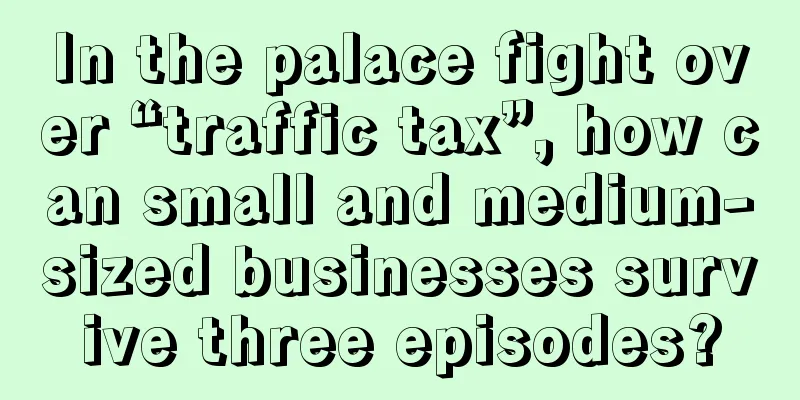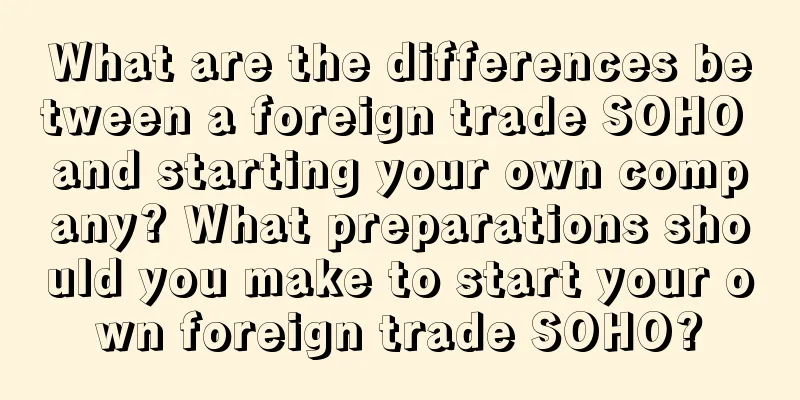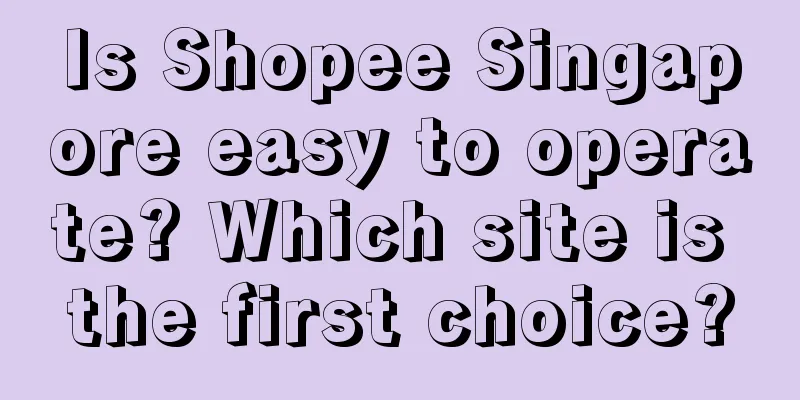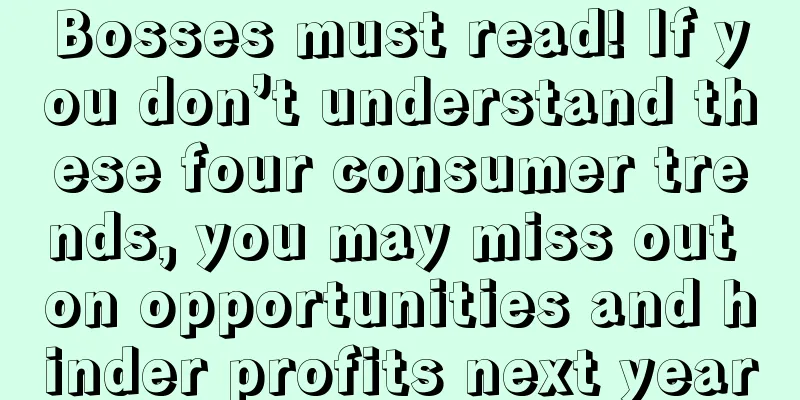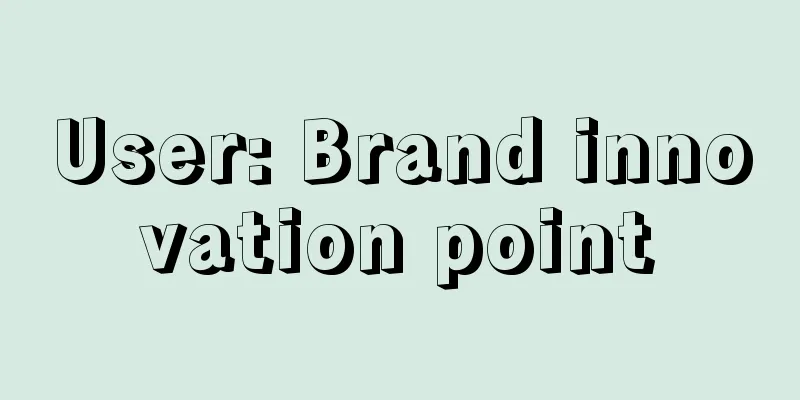What exactly is the “bottom-level logic” and “top-level thinking” that others talk about?
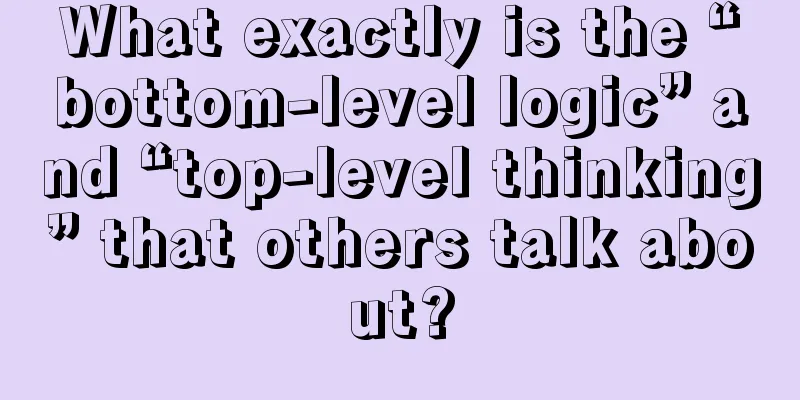
Many people talk about "bottom-level logic" and "top-level thinking" when chatting. These are high-sounding but obscure words. Do you find them a little confusing? Today I will explain them in detail. 1. What is the underlying logic?There is no widely accepted definition yet. Generally speaking there are two interpretations:
The big guys' understanding of the underlying logic is:
Ray Dalio, the author of Principles, said: "The operation of everything depends on the laws hidden deep inside, that is, a series of causes and effects that determine the direction of the world. If you can explore the cause and effect relationship, even if you cannot explore all the causes and effects, even if you can explore most of the causes and effects, then there is no doubt that you have the key to unlock the treasures of this world." Business consulting expert Liu Run also said: "No matter what business you do, you must find the most fundamental truth." These views have one thing in common, which is that they believe that everything has a basic operating law hidden behind it. This law is the underlying logic. The underlying logic is usually invisible and intangible. Unless you go deep into it, you can't perceive it. If no one explains it to you, you may never think of the logic behind it. 1. Give an exampleWhat is the essence of the Internet industry? To put it bluntly, it is to improve efficiency in a certain online scenario, obtain traffic, and then make money from the traffic. For example, the greatest value of Didi Taxi is that it improves the efficiency of matching drivers and passengers. When the supply of drivers is stable, if Didi wants to further improve its performance, it needs to acquire more users and continuously interact with users to obtain more traffic. Only with traffic can there be orders. This is not only true for taxi platforms, but also for content platforms such as Douyin and Video Account. 2. Example: Chain industryMixue Ice City has more than 10,000 stores across the country. The valuation of Mixue Ice City is much higher than that of Heytea, which may be beyond the expectations of many people. It is like an ant defeating an elephant, which is hard to understand. How does the Mixue Ice City brand make money? Does it make money by selling milk tea? Yes, but this is just the surface. The underlying logic of Mixue Ice City's brand to make money is to build a supply chain. Those more than 10,000 stores are essentially sales points for milk tea ingredients. From this underlying logic, you will find that Miniso, Zhengxin Chicken Steak and Mixue Ice City are the same, they just provide different products. Once a brand has hundreds of stores and a back-end supply chain, the marginal cost of subsequent franchised stores will not change significantly, whether the number is 100 or 1,000. In other words, if a company needs 50 people to serve 100 stores, it can also afford to serve 1,000 stores. The premise here is a franchise model, not a direct operation. On the contrary, the marginal cost of direct-operated chain brands will continue to grow as the number of stores increases. Once they encounter adverse factors, their risk resistance is particularly weak. There are not many restaurant chain brands in China with a scale of more than 1,000. It is precisely because this underlying logic is not easy to understand, and it is difficult to implement after understanding, that it takes a long time to successfully build a supply chain. In short, the underlying logic of the restaurant chain is to form a cost advantage by controlling the upstream supply chain, and then adopt a low-price strategy, open stores on a large scale, and sell products in each offline store. 3. Example: Real estateAnother example is the underlying logic of real estate. In the past, the underlying logic of national real estate was that the government sold land, people used money to buy houses, and an economic cycle was formed through bank loans. Specifically, the government sold land, real estate companies built houses, banks provided funds, and people bought houses, thereby promoting economic development. However, the situation has changed now. House prices are too high, people can't afford to buy houses, houses can't be sold, and banks no longer provide funds to real estate companies. The government can't always rely on selling land to make a profit, and it's difficult to make a profit through property taxes. Real estate companies have difficulty getting loans, and people can't buy houses. This is the problem facing real estate now, and the underlying logic has changed. 2. What is top-level thinking?In short, top-level thinking is to start from the core principles of things, break down big problems into a series of homogeneous small problems, and actively look for solutions . Then connect the goal with the current situation, find the necessary steps, and implement them one by one. It is a framework-based thinking method from top to bottom and from big to small. The biggest difference from the bottom-level logic is the change in observation angle. In computer science terms, "top-level thinking" is called "recursive thinking." So what is recursive thinking? Let's listen to a story: Once upon a time there was a mountain, in the mountain there was a temple, in the temple there was an old monk who was telling a story to a young monk! What was the story? Once upon a time there was a mountain, in the mountain there was a temple, in the temple there was an old monk who was telling a story to a young monk! What was the story? This story can be told "infinitely" because the "story" nested in the story is the "story" itself. This is an example of "recursion" in language. In computer language, it is - In a recursive algorithm, there are two necessary conditions:
How to understand recursive thinking, which can be regarded as the "top-level thinking" of life?It is to transform a complex problem layer by layer into problems that are similar to the original problem but smaller in scale, and ultimately solve the entire big problem. Most people use recursive thinking when dealing with things, processing from the bottom up step by step. For example, I should do yesterday's things today just like I did yesterday, or my impression of my ex will affect my behavior. On the contrary, "random thinking" is step-by-step, inefficient, and difficult to recognize. For example, if you are a student who has just entered college, your random thinking may be that no one in the dormitory wants to be the head of the dormitory, so they have to draw lots to decide who will be the head of the dormitory. In my second year, the arrival of a foreign teacher sparked my interest in Western history, and I spent some time studying history books. Before graduation, I realized that good companies needed internship experience, so I began to ask relatives and friends about internship opportunities. Every action was influenced by external opportunities. Top-level thinking starts from core principles, actively seeks solutions, connects goals with current situations, finds the necessary path, lists the order of priority, and implements them one by one. 3. How to apply top-level thinkingLet's look at the following example: Musk has a grand dream to send 1 million people to Mars. Currently, the cost of a round trip for one person to Mars is $10 billion, and current technology can only send 5 people at a time. This dream seems unattainable. However, Musk breaks down this goal as follows: 20000 = 20 × 10 × 100 Among them, 20 represents increasing the rocket's passenger capacity by 20 times, that is, it can carry 100 people at a time, so that the launch cost is averaged out to each person; 10 represents reducing the rocket's launch cost by 10 times, and reducing the cost structure by building the rocket by oneself. Musk has achieved this goal; 100 means allowing the rocket to be launched repeatedly 100 times to solve the key limitation of launch cost. Musk breaks down the abstract goal from the top-level design into three specific outputs and implements them separately. How did he put it into practice? Many people were skeptical and no one invested in SpaceX. In order to achieve his goal, Musk divided the Mars immigration plan into three stages: The first stage was to solve the confidence problem and make people believe that he had the ability to send rockets into space. SpaceX launched the first Falcon 1 rocket with a load of one ton and obtained third-party financing before running out of funds. The second stage is to achieve profitability, self-sufficiency, and support subsequent immigration projects. During this stage, SpaceX launched a heavy Falcon rocket with a load of 64 tons, sending 180 satellites into orbit at a time. Since SpaceX's rockets are reusable, the launch cost and efficiency far exceed those of other countries. At present, SpaceX has sent 12,000 satellites into orbit, becoming the largest satellite operating company with very strong profitability, and is actually ahead of many countries in the world. The third stage is to achieve the ultimate goal: Mars immigration! For ordinary people, we may not have the far-sighted top-level thinking like Musk, but we can learn from this way of thinking to plan our own milestones and lives. If the college student has top-level thinking, his plan when he is in school may be like this: internship is the only way to find a job, so he must arrange an internship during the summer vacation of his sophomore and junior years; college is a process of self-discovery, and science students should participate in club activities such as poetry clubs and drama clubs; hold certain positions in the student union, class or dormitory to improve organizational and coordination skills; in order to avoid inbreeding culture, do not limit yourself to making friends with people from the same hometown or classmates. Obviously, after spending four years studying in the same university, the opportunities the two students mentioned above got after graduation must have been worlds apart. 4. Learn the underlying logic and cultivate top-level thinkingThe development of all things follows the laws of objective existence, just as Ding Yuanying said in The Way of Heaven: "The Way of Heaven is not subject to human will." The underlying laws are not affected by human thoughts or will, just like a stone will not change because we hope it will turn into gold. The objective world is not subject to human will, but the subjective world can be affected by human will. Learn to see through the underlying logic of things, find the root cause of the problem, do not be confused by superficial phenomena, and explore solutions along the essence of the problem. Cultivate the consciousness of breaking away from the self-empiricist way of thinking, expand your perspective, see things from a "God's perspective", find the rules, and find solutions to problems. As the classic line from The Godfather says:
Author: Qingyun; Source public account: Qingyun Dayao (ID: 1076815) |
<<: How to cancel the pre-sale system?
Recommend
Fresh graduates drifting in Yiwu
At a time when employment pressure is very intense...
Do I need to advance funds to do cross-border e-commerce? Does it cost money to register a store?
Cross-border e-commerce is of interest to many peo...
Are there any sea freight costs? What are the costs of sea freight?
Nowadays, cross-border e-commerce platforms have r...
What are the salary packages at Alibaba International Station? How does it operate?
In addition to some stores, Alibaba International ...
Xiaohongshu's Double 11 strategy (copied homework)
The annual Double 11 is coming! Have you prepared ...
Will Shopee lose its rights if it changes its prices? How to change prices cleverly?
The prices of Shopee products will also change as ...
After transforming into selling goods, can Xin Jifei still have "technology and hard work"?
Xin Jifei, who became popular last year for his ph...
Will delayed delivery from Shopee affect traffic? What happens if delivery is overdue?
After we open a store on Shopee, we need to ship g...
Say no to rebranding technology — ways to improve marketing effectiveness (Part 2)
The article raises the question of "How to re...
Douyin tries out AI e-commerce, testing "AI shopping assistant"
It is reported that Douyin e-commerce is testing t...
How long does it take to open a Lazada Super Alliance account? FAQ
As a cross-border e-commerce platform, Lazada'...
The secrets of second-hand e-commerce platforms are hidden in Xianyu’s live streaming
In the second-hand market, Xianyu, a seafood marke...
What is the difference between Amazon's parent ASIN and child ASIN? What is the difference between them and SKU?
On the Amazon platform, we often come across two t...
Luckin Coffee + Moutai, this does not require copywriting
Luckin Coffee and Moutai have teamed up! The combi...
You have made so many earth-shaking advertisements, why are they useless?
Many human behaviors are controlled by the subcons...
